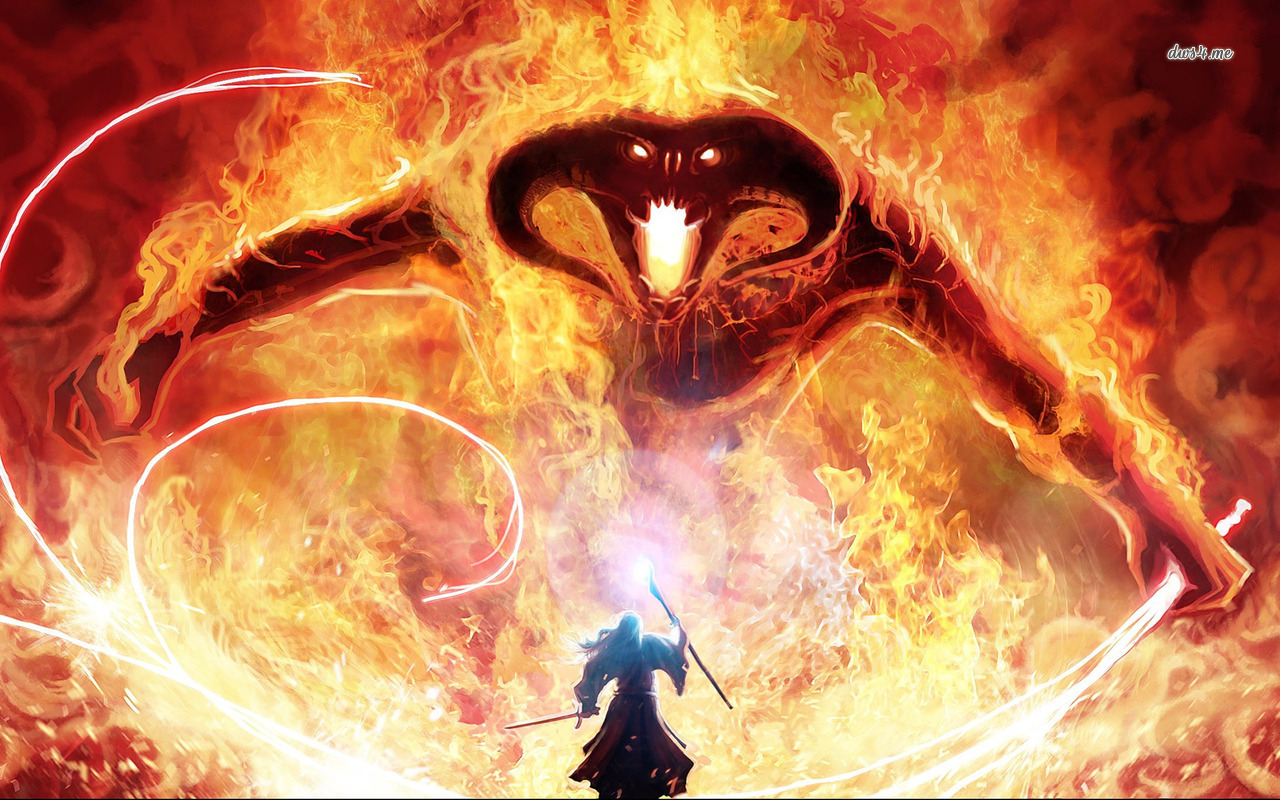
One artist’s depiction of the Balrog confronting Gandalf in “The Lord of the Rings” by J.R.R. Tolkien
Recently in my Tolkien Literature Reading Group, one of the members asked me what I, “as a writer,” thought about a certain scene in The Lord of the Rings. I think it was the scene where Gandalf confronts the Balrog in Moria. Tolkien simply says that the Balrog “was like a great shadow, in the middle of which was a dark form, of man-shape maybe, yet greater” with a mane, a sword, and wings. Gandalf defies it, claiming his status as “a servant of the Secret Fire, wielder of the flame of Anor.” Tolkien doesn’t bother to tell us what the source of this Secret Fire is nor what the flame of Anor is. Each reader is left to imagine the details of the Balrog; it was only in the various film interpretations of the LOTR that viewers were passively fed the Balrog’s details because film required the visual presentation of the Balrog in all its fearsome glory.
I realized that Tolkien, in that particular scene and in many others as well (once I thought about it), did not say nearly as much as most readers think he does in terms of description and detail. He writes JUST ENOUGH and then lets us — each reader — fill in the details. That way each of us is more invested in the scene, in what happens, and in what results come of it. We supply our own vision of beauty and ugliness, what is frightening or comforting, what propels or inhibits the characters.
Too often writers supply too much — too much description, too many motivations, too many words. We need to trust readers more to fill in these details themselves. We overwrite. We over-describe. We need to allow the reader(s) to contribute their own efforts to fill in the gaps and make the scene more compelling. All too often, this is what happens anyway: we can describe a character’s exact appearance, down to the last detail, but the reader will recreate them in whatever way seems appropriate to that reader in order to make the character “beautiful” or “sneaky” or whatever the character’s most important trait is. (I remember that I first read The Hobbit immediately after finishing The Wind in the Willows and I have always pictured Bilbo as a rather large frog wearing Victorian clothes in many scenes, simply another version of Mr. Toad.)
Allowing the reader to contribute to the scene not only makes the scene much more effective but helps us writers to become better writers as well. It might seem lazy to say less about a character or a scene but it actually forces us to be more thoughtful and concise. It makes us think about what is really important about the scene or character and drop anything extraneous.
THAT’S the hard part!

I agree! I think most contemporary writers are actually writing screenplays, not novels.